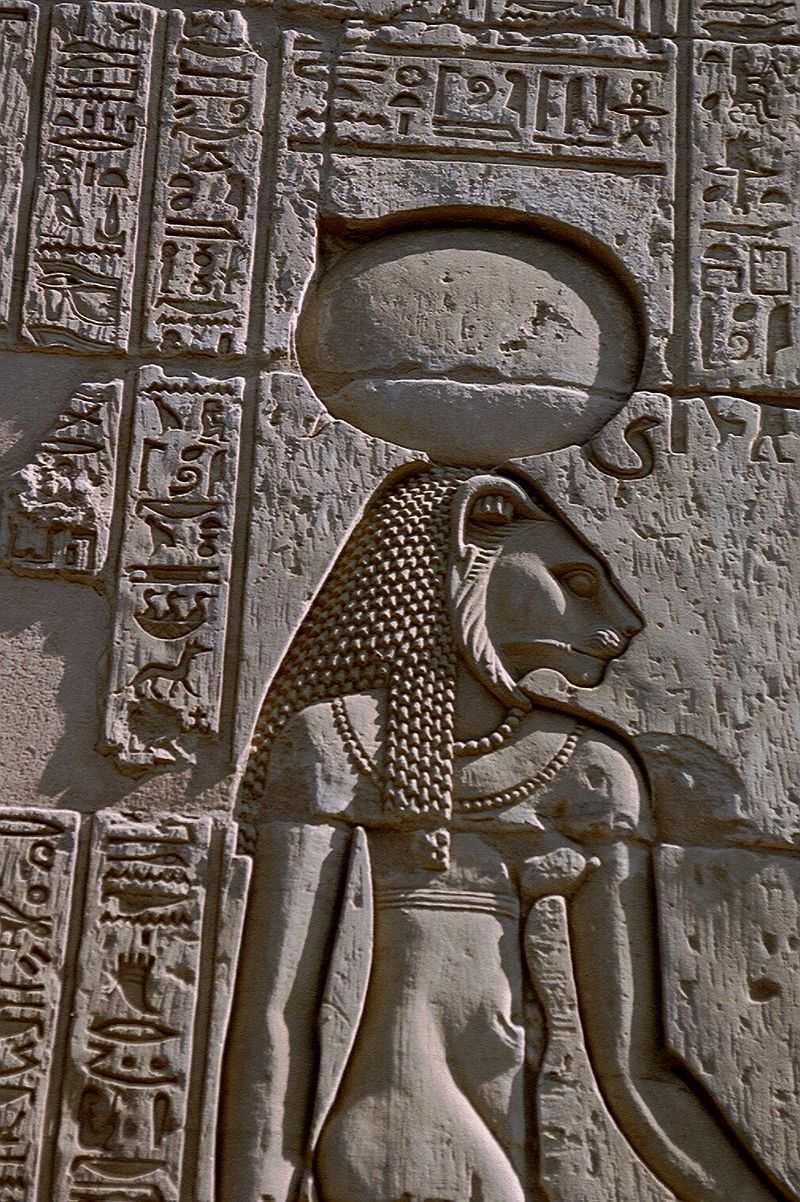Sekhmet (4e Deity)
Sekhmet[edit]
Good
Domains: Vengeance, Justice, War
Sekhmet is an exarch of Anhur, encompassing the more violent aspects of the god. Sekhmet primarily concerns herself with vengeance against those who oppress and exploit the innocent, enforcing the rules of just warfare, and destroying the undead and those who would interfere with the natural cycle of life and death. She is a harsh and bloodthirsty, but ultimately fair, goddess, who expects valor and self-sacrifice from her worshippers. However, Sekhmet's righteous rage can burn out of control, and she can destroy worlds in her zeal to root out corruption. She has three primary commandments for her followers, all of which tell them whom to kill and why.
- Never kill an innocent civilian. Even if they attack you, aim to disarm or disable rather than kill. Execute those who commit genocide or war crimes, for they make a mockery of war.
- Destroy the undead in all their forms. Execute those who raise undead, for they make a mockery of both life and death.
- The strong have no more rights than the weak. Execute those who engage in political repression, child abuse, sexual violence, or blackmail, for they make a mockery of power.
Worship of Sekhmet originated in Mulhorand among disgruntled war veterans, bodyguards, vigilantes, and hunters of the undead. Sekhmet, like Anhur, has some solar aspects. Her followers envision her wrath as scorching sunlight, purifying corruption and undeath, and shining light on injustice. However, she is also seen as somewhat of a solar mother goddess, protecting and warming her followers as a lioness does her cubs or the sun does the earth.
Priestesses of Sekhmet must be female, be at least 45 years old (in human years; equivalent in races with a longer/shorter lifespan), have combat experience, and be the biological or adoptive mother of at least one surviving child. Most priestesses are retired paladins. Paladins and laity of the faith, however, can be of any race or gender and of any age past puberty.
Sekhmet is said to "call" those who seek justice but have despaired, by appearing as a lioness who offers them the option of vengeance in return for serving her. If they accept, the initiate will envision that they are being eaten by the lion-goddess, then will envision that they are reborn from her womb. They then go to a temple to be trained in combat, interrogation, and basic anti-undead techniques. Paladins usually wear red clothing under their armor. When they are performing a ceremony, priestesses wear a red linen shift that leaves their breasts bare, a copper helmet/mask in the shape of a lioness's head, clawed gloves, and two scimitars. Otherwise, they wear red linen dresses, distinctive cat-eye eyeliner, and copper or gold jewelry. They are always armed to some extent. Priestesses, paladins and lay worshippers are not required to be celibate, nor of any particular sexual orientation.
Sekhmet's holiest day is the summer solstice. At noon on this day, worshippers will hold weddings or child-naming ceremonies in the temple, paladins will take oaths, and blessed objects will be re-blessed with sunlight, salt, and the blood of the head priestess. Burnt offerings of papyrus with prayers written on them in the worshipper's blood will also be made, and libations of salted beer stained red with ochre will be poured out before a statue of the goddess. No one is killed or severely injured in the making of blood offerings/blessings, and medics are available if needed. At noon every day, when the sun is shining on it, the statue of Sekhmet will be anointed with salt and oil of valerian by the priestesses. Lay worshippers, initiates, and local paladins are free to observe this ceremony and pray.
Temples are fortified and surrounded by barracks for the priestesses. Only the families and official lovers of priestesses are allowed in the barracks. Paladins in training are fed at the temple, but do not stay overnight at the temple compound, and are given a small stipend to find housing elsewhere. This they are expected to pay back from any wages they might make after they take their oath. Temples also make money and connections by hiring out paladins as adventurers, bodyguards, and elite military operatives for a small cut of the payment. Temples have a clear quartz window in the roof above the altar and statue of the goddess, which allows the sunlight to shine through for blessings.
Sekhmet is the exarch of Anhur, who can control her rage and whom she obeys as a daughter. She is allied through necessity with the Mulhorandi pantheon, but often disagrees with them. She was previously in a relationship with Hoar, until he turned toward evil. She is opposed to most evil-aligned gods, particularly Orcus and Bane. She is on cordial terms with most good-aligned or unaligned gods. She fears and respects the Raven Queen.
Back to Main Page → 4e Homebrew → Deities
